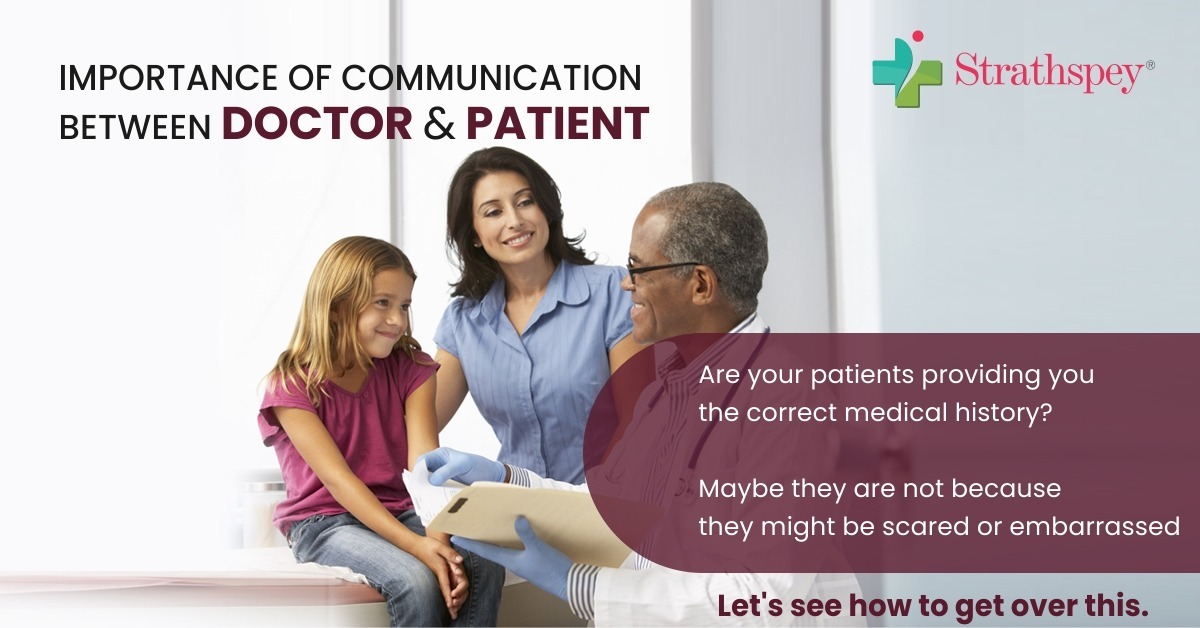Why is Communication important between Doctors and Patients?
 16/07/2021
16/07/2021 Strathspey
Strathspey 0
0

Patients should never hide anything from their doctors and communication
plays an important role in treatment. Communication skills can
facilitate the comprehension of medical information. It also allows for
the better identification of patients' needs and expectations. Patients
who report good communication with their physician are more likely to be
satisfied with their care.
However, there are a few barriers to effective communication in the doctor-patient relationship, including patients' anxiety and fear, doctors' burden of work, fear of litigation, fear of physical or verbal abuse, and unrealistic patient expectations.
Effective doctor-patient communication is a central clinical function, and the resultant communication is the heart and art of medicine and a central component in the delivery of health care.
The three main goals of current doctor-patient communication are creating a good interpersonal relationship, facilitating the exchange of information, and including patients in decision making.
Effective doctor-patient communication is determined by the doctors' “bedside manner,” which patients judge as a major indicator of their doctors' general competence.
Good doctor-patient communication has the potential to help regulate patients' emotions, facilitate comprehension of medical information, and allow for better identification of patients' needs, perceptions, and expectations.
Patients reporting good communication with their doctor are more likely to be satisfied with their care, and especially to share pertinent information for accurate diagnosis of their problems, follow advice, and adhere to the prescribed treatment.
Patients' agreement with the doctor about the nature of the treatment and the need for follow-up is strongly associated with their recovery.
Enhanced psychological adjustments and better mental health have also been reported.
Some studies have observed a decrease in length of hospital stay and therefore the cost of individual medical visits and fewer referrals.
A more patient-centred encounter results in the better patient as well as doctor satisfaction.
Satisfied patients are less likely to lodge formal complaints or initiate malpractice complaints. Satisfied patients are advantageous for doctors in terms of greater job satisfaction, less work-related stress, and reduced burnout.
However, there are a few barriers to effective communication in the doctor-patient relationship, including patients' anxiety and fear, doctors' burden of work, fear of litigation, fear of physical or verbal abuse, and unrealistic patient expectations.
Effective doctor-patient communication is a central clinical function, and the resultant communication is the heart and art of medicine and a central component in the delivery of health care.
The three main goals of current doctor-patient communication are creating a good interpersonal relationship, facilitating the exchange of information, and including patients in decision making.
Effective doctor-patient communication is determined by the doctors' “bedside manner,” which patients judge as a major indicator of their doctors' general competence.
Good doctor-patient communication has the potential to help regulate patients' emotions, facilitate comprehension of medical information, and allow for better identification of patients' needs, perceptions, and expectations.
Patients reporting good communication with their doctor are more likely to be satisfied with their care, and especially to share pertinent information for accurate diagnosis of their problems, follow advice, and adhere to the prescribed treatment.
Patients' agreement with the doctor about the nature of the treatment and the need for follow-up is strongly associated with their recovery.
Enhanced psychological adjustments and better mental health have also been reported.
Some studies have observed a decrease in length of hospital stay and therefore the cost of individual medical visits and fewer referrals.
A more patient-centred encounter results in the better patient as well as doctor satisfaction.
Satisfied patients are less likely to lodge formal complaints or initiate malpractice complaints. Satisfied patients are advantageous for doctors in terms of greater job satisfaction, less work-related stress, and reduced burnout.
.jpeg?alt=media&token=e7ba6f8e-17a4-477e-a589-e00341d2160c)
.jpg?alt=media&token=82fc7990-d069-42ba-b73f-9c501a7bb67b)
.jpg?alt=media&token=c0ed94bc-7e5c-44d5-9a50-ed2df3599559)


